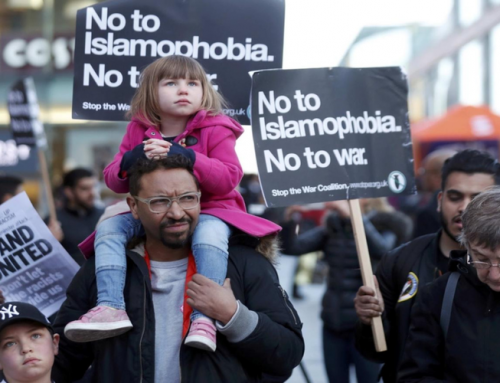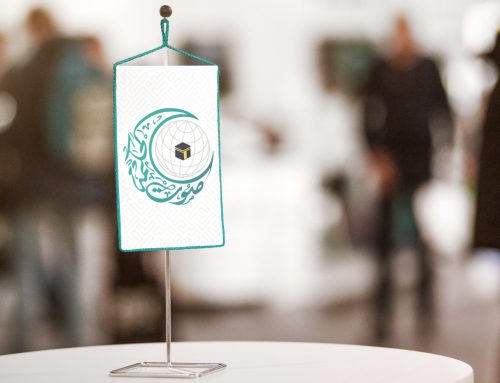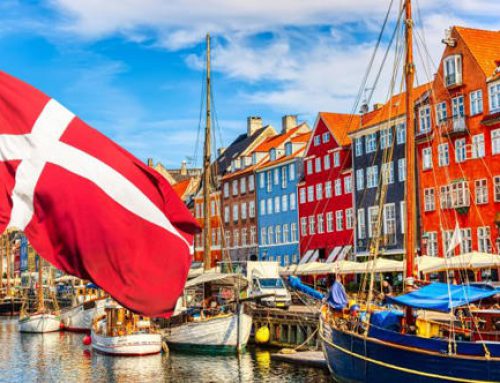Interreligious Dialogue as a Tool in fighting Islamophobia[1]
Islamophobia in Western countries is detrimental to Muslims and non-Muslims living in these societies. It not only can lead to exclusion or even violence, but also fractures communities and threatens the fabric of society. Interreligious and intercultural dialogue can serve as a tool to fight these negative stereotypes while bringing communities together. What is needed to develop an interreligious dialogue program to this end? One possible answer can be found by examining the causes of Islamophobia to derive the components necessary for developing interreligious programs strong enough to invoke transformations that will have lasting impact.[2]
Anti-Islam sentiment has existed for a long time and pre-dates the attacks of 9/11. Several scholars have examined Western views of Islam in the historical context with varying theories as to its origins. Some argue that colonialism created the need for generating the Muslim as an “other” (Maira 2011), or that the often negative stereotypes stems from “orientalism[3]” (Said 1981), while a broader perspective posits that both orientalism and modernization divide the World into East and West, with the West as superior, justifying Western intervention (Kumar 2012). Although the “otherization” of Muslims has been a part of several stages in history, 9/11 exacerbated Islamophobia making these sentiments more visible in the United States following the attacks. More recently, these Islamophobic sentiments have become more pronounced in Europe with the growing number of refugees and aided by the attacks claimed by Da’esh in Belgium, France and Germany. Islamophobia arises as a result of prejudice and negative stereotypes assigned to Islam as being: 1. Monolithic, an unchanging bloc; 2. “other”; 3. Inferior to the West, barbaric, irrational, primitive and sexist; 4. Violent, aggressive and supportive of terrorism; 5. A political ideology (Runnymede Trust report 1997). These views then justify: 1. Absolute rejection of criticisms made of the West by Muslims; 2. Discriminatory practices towards Muslims; 3. Exclusion of Muslims from mainstream society; and 4. Hostility towards Muslims (ibid). The effects of Islamophobia are far reaching, creating barriers such as prejudice, discrimination, exclusion, and violence thus raising the risk of harassment, bullying and even hate crimes for individuals and whole communities.
Understanding how prejudice emerges is an integral aspect in developing strategies to counter such views. While in the past, prejudice may have been spurred due to a lack of information, today there is the opposite problem, namely an overload of information. With so much information available, in fact it is possible for an individual to read only viewpoints that confirm his/her point of view. Prejudicial views are born of several causes in the information age. According to Ponterotto et al., such views stem from three main factors: “our tendency toward ethnocentrism, our lack of meaningful inter-group contact, and our inclination to organize information into pre-developed categories” (p.12). While prejudice refers to negative views, stereotypes may or may not be negative and refer to a set of general characteristics that are seen to belong to specific group. Stereotypes may influence how individuals perceive and interact with the group or its members. Stereotypes and/or prejudice emerge as a competition of interests between groups and can serve as a means to elevate one group’s position over another’s. Furthermore prejudice may come about as a result of beliefs tied into a racist system and compounded with elements of the present culture (Wolfe and Spencer 1996); in this case Islamophobia may arise from antireligious feelings combined with xenophobia. Implicit in these theories is that individuals tend to view themselves, their own groups, societies and systems as positive and preferable (Jost et al. 2004).
Although the factors that lead to Islamophobia are multifaceted, interreligious dialogue can serve as a tool in transforming negative stereotypes. Thus, by drawing on the causes of prejudice and stereotypes that lead to Islamophobic attitudes and ex
Thus, countering Islamophobic attitudes requires both Muslim and non-Muslim communities to, first, exchange objectives and new information about each other in their formal and informal educational institutions, while also engaging in a process of critical reexamining of their mutual sources of information about each other. Second, Muslim and non-Muslim societies can effectively respond to Islamophobic attitudes by providing their communities with opportunities and spaces to meet and positively experience the other side. Such spaces are often missing for many who live in isolated community enclaves. Breaking out of the ethnic, religious, racial, and other forms of enclaves allows a person to meet the other. Building positive relationships as a result of these personal encounters is another element that can contribute to reduction of Islamophobia. Third, to cement the change from negative to positive attitudes, it is essential to have the opportunity and space to apply the new knowledge about the other in real life situations. This is the realm of joint interreligious and intercultural actions. Having the space to participate in actions with other diverse religious groups allows the person to deepen his or her positive learning about the other.
The above three pillars are core elements of interreligious and intercultural dialogue. As indicated above, applying one of them is certainly useful, however to maximize our intervention in responding to Islamophobic ex
*Prof. Mohammed Abu-Nimer is a Senior Advisor to KAICIID and a professor at the School of International Service at American University.
Abu-Nimer, M. (1999) Dialogue, conflict resolution and change: Arab-Jewish encounters in Israel. New York: State University of New York Press.
Abu-Nimer, M (2014, April 15) Confronting our internal voices. The Interfaith Observer. Retrieved from http://theinterfaithobserver.org/journal.articles/2014/4/15/confronting-our-internal-voices.html
Abu-Nimer, M. and M. Hilal (2016). Combatting Global Stereotypes of Islam and Muslims: Strategies and Interventions for Mutual Understanding. In H. Tiltouine & R.J. Estes (Eds.) The State of Social Progress of Islamic Societies, International Handbooks of Quality-of-Life. DOI 10.1007/978-3-319-24774-8_28
Hewstone, M. and R.J. Brown (1986). Contact is not enough: An intergroup perspective on the contact hypothesis, In M. Hewstone & R.J. Brown (Eds.), Contact and conflict in intergroup encounters (pp. 1-44). Oxford: Blackwell.
Jost, J.T, M.R. Banaji, and B.A. Nosek (2004). A decade of system justification theory: Accumulated evidence of conscious and unconscious bolstering of the status quo. Political Psychology, 25(6). Pp. 881-919.
Kumar, D. (2012). Islamophobia and the politics of empire. Chicago: Haymarket Books.
Maira, S. (2011). Islamophobia and the War on Terror: Youth, citizenship, and dissent. In J. Esposito & I. Kalin (Eds.) The challenge of pluralism in the 21st century (pp. 109-126). New York: Oxford University Press.
Ponterotto, J.G., S. Utsey, and P. Pedersen. (2006) Preventing prejudice: A guide for counselors, educators and parents (2nd ed.). Thousand Oaks, CA: Sage Publications.
Runnymede Trust. (1997). Islamophobia: A challenge for us all. London: Author. Retrieved from http://www.runnymedetrust.org7publications712732.html
Said, E.W. (1981). Covering Islam: How the media and experts determine how we see the rest of the world. (1st ed.) New York: Pantheon Books.
Wolfe, C.T. and S.J. Spencer. (1996). Stereotypes and prejudice: Their overt and subtle influence in the classroom. The American Behavioral Scientist. 40(2). Pp. 176-185.
[1] This contribution is based upon a larger article, published earlier in 2016 by Abu-Nimer and Hilal, entitled “Combatting Global Stereotypes of Islam and Muslims: Strategies and Interventions for Mutual Understanding”.
[2] Thank you to Renata Katalin Smith for her help in the initial stages of drafting.
[3] A depiction of Eastern – Middle Eastern, North African, South and Southeast Asian – culture from an occidental viewpoint, as depicted in art history, literature, cultural studies, and social science.





